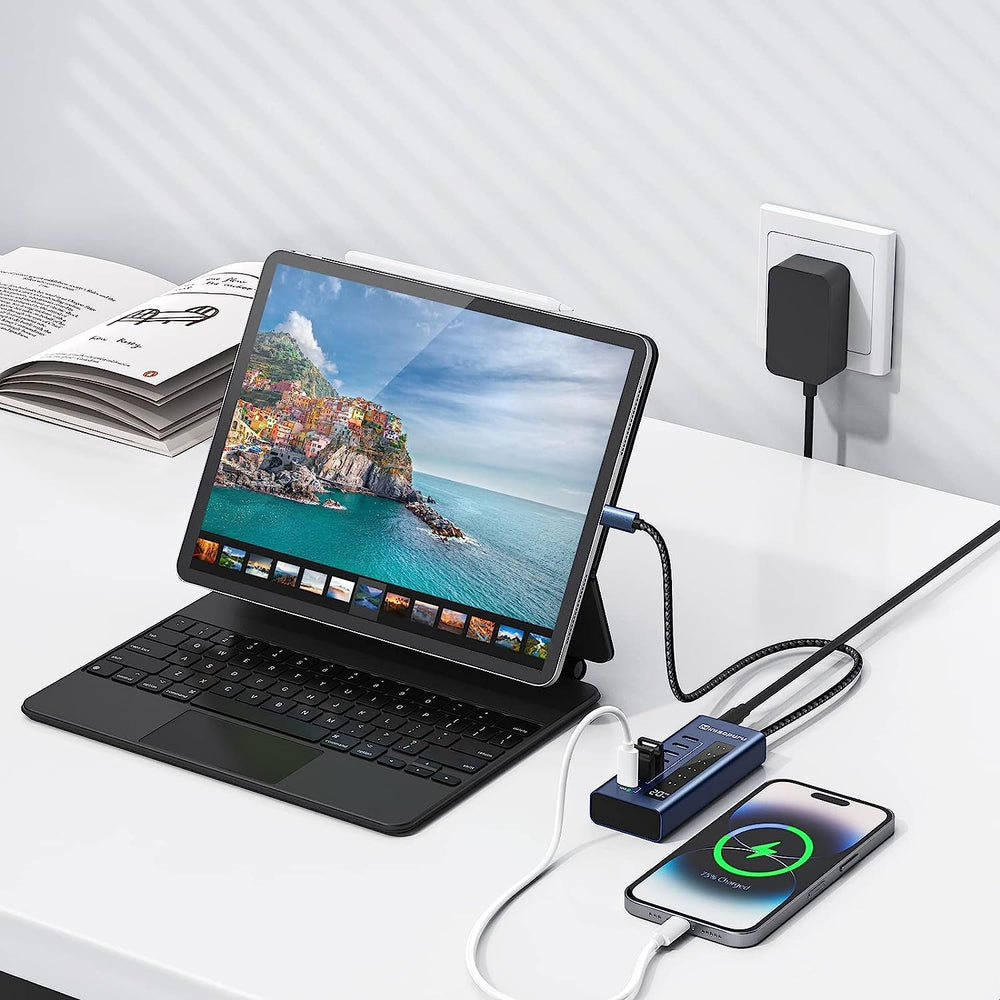HDMI Switch vs. HDMI Splitter: Key Differences
Many people are confusing the HDMI Splitter and Switch, but they are as different as salt is from spices—both add unique flavors to the experience.An HDMI switch eliminates the hassle of bending down and swapping cables to make room for your source device. It allows you to display content from devices like Roku, Blu-ray players, PS4, and Xbox on the screen with the press of a single button.
On the other hand, a splitter duplicates the screen onto other monitors, TVs, and projectors.
If you're unsure whether you need a splitter or a switch, don't worry. I'll explain when you should not use an HDMI Splitter and when to use an HDMI switch.
I assure you that you'll have a clear understanding.
The HDMI Switch: A Solution for Multiple Devices
An HDMI switch is a clever device designed to simplify the process of connecting several HDMI devices to a single television set.When your TV has only 1-3 built-in ports and it's challenging to connect other HDMI devices, the HDMI switch comes to the rescue. It eliminates the need to unplug one device to use another.
With an HDMI switch, your MacBook, Blu-ray media player, and Xbox can remain connected to the TV at all times, providing convenient access to your entertainment. It also ensures that devices like Roku stay close to power and WiFi sources.
You can simply press a single button with your thumb to display content from your preferred device. The switch reduces the time spent behind the TV, swapping cables. With an HDMI switch, you only need 5 seconds to get your display ready from an external source.
In addition to simplifying the daily management of multiple displays, the HDMI switch also extends the life of the HDMI port by reducing the need for frequent handling. You just need to ensure that you have the most suitable device and that the switch has enough ports to meet all your display needs.
When it comes to determining the necessary input/output ports, the sky is the limit. Before we proceed, I'll share a trick for confirming the number of inputs and outputs on a package without opening it.
1 x 3 vs. 3 x 1: Understanding Input and Output Ports
Splitters and switchers are labeled with a number that indicates the number of input and output ports they have. The format of two numbers separated by "X" provides a clear indication of the configuration and capacity of a switcher.When you see "1 × 3" on the box, it means the switcher has 1 inputs and 3 output. Similarly, if the box displays "3 × 1," it indicates that the switcher has 3 inputs and 1 output.
Still confused? Let's break it down further.
For example, if you want to connect a TV box, a PS4, and a Blu-ray player to a single display screen, you can do this easily with a 3 × 1 (3 inputs, 1 output) HDMI switcher.
While HDMI switches are convenient, they can sometimes compromise the quality of the image and affect your viewing experience.
How Does an HDMI Switch Impact Quality?
Let's address the two most common reasons first:1 - You may have purchased a low-quality HDMI switch that is hindering signal transfer.
2 - The HDMI cable you are using may be outdated and unreliable.
To avoid wasting money and time, it's important to use premium HDMI cables.
However, the quality of the display also relies on the compatibility between your cable, switch, and TV.
It's crucial that the switch you choose matches the resolution and HDMI version of your latest device. Many low-cost switches are HDMI 1.4, which is suitable for 1080p but not ideal for most 4k resolutions. It's worth spending a little extra to upgrade to HDMI 2.0 to future-proof your setup, even if none of your devices currently support 4k.You can't ignore the rapid innovations in the tech industry, which are leading to advancements in different types of HDMI cables.
While HDMI 2.0 is backward compatible, an HDMI switch cannot be "upgraded" to 2.0.
An HDMI switcher will be ineffective if you want the same source displayed on multiple devices simultaneously. For this, you should use an HDMI splitter.
HDMI Splitter: What You Need to Know
An HDMI splitter allows you to display the same video in 2 different rooms by duplicating the HDMI signal into multiple outputs.To illustrate, let's consider a simple example. Suppose you have a Roku and want to duplicate the screen on other monitors or TVs. In this case, you would need a splitter to take the output signal from the Roku and split it into two different audio-video streams.
However, it's important to note that many splitters can encounter issues, often due to HDCP, which is designed to prevent illegal content copying and can result in a black screen with a notice.


1 comment
Don
I think the following is a mistake. You say:
“When you see “1 × 3” on the box, it means the switcher has 3 inputs and 1 output. Similarly, if the box displays “3 × 1,” it indicates that the switcher has 3 inputs and 1 output."
In the first part of the sentence, it should say “1 input and 3 outputs”.
I think the following is a mistake. You say:
“When you see “1 × 3” on the box, it means the switcher has 3 inputs and 1 output. Similarly, if the box displays “3 × 1,” it indicates that the switcher has 3 inputs and 1 output."
In the first part of the sentence, it should say “1 input and 3 outputs”.